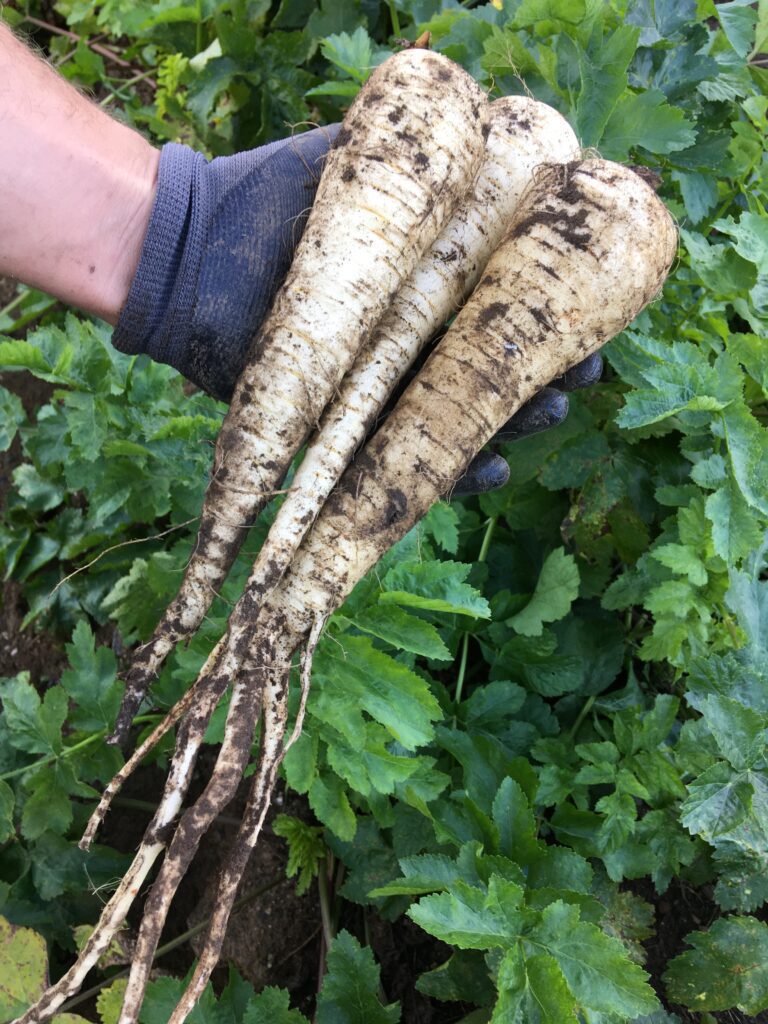
The parsnip is closely related to carrots and celeriac, and has been utilized as a food for thousands of years. In fact, it was Europe’s preeminent winter vegetable until the potato was introduced in the eighteenth century and ultimately usurped it position. Interestingly, colonists took the parsnip to the New World where the early settlers used it to make everything from wines, pies, breads and puddings to chips and stews.
Selection and Storage:
Parsnips taste best during the colder months, as the plant stores sugars in its large root. They are always sold without their green tops as these contain an irritating juice that can cause a serious rash on some people. The freshest parsnips will have smooth, creamy-beige skin; avoid any with browning on their skin or with tops that have begun to sprout. On our farm we harvest some parsnips in the fall as the weather takes a turn for the cold, but store the majority of them in the ground over the winter. As the snow melts we harvest them and store them in our cold storage for a delicious ‘Spring dug’ treat. Their sweetness is intensified after the long cold winter.

Store wrapped in plastic in the refrigerator for a week. Long storage can cause the roots to become tough and fibrous.
Culinary Uses:
Parsnips need richness to bring out their silky texture and nutty flavor; roasting in butter or olive oil, for example, or baking or pureeing with cream are ideal. While you may need to preboil parsnips in order to use them in some other way, boiling isn’t generally a good treatment for parsnips as they become water-logged and unpalatable.

Information from: The Produce Guide by Leanne Kitchen.

